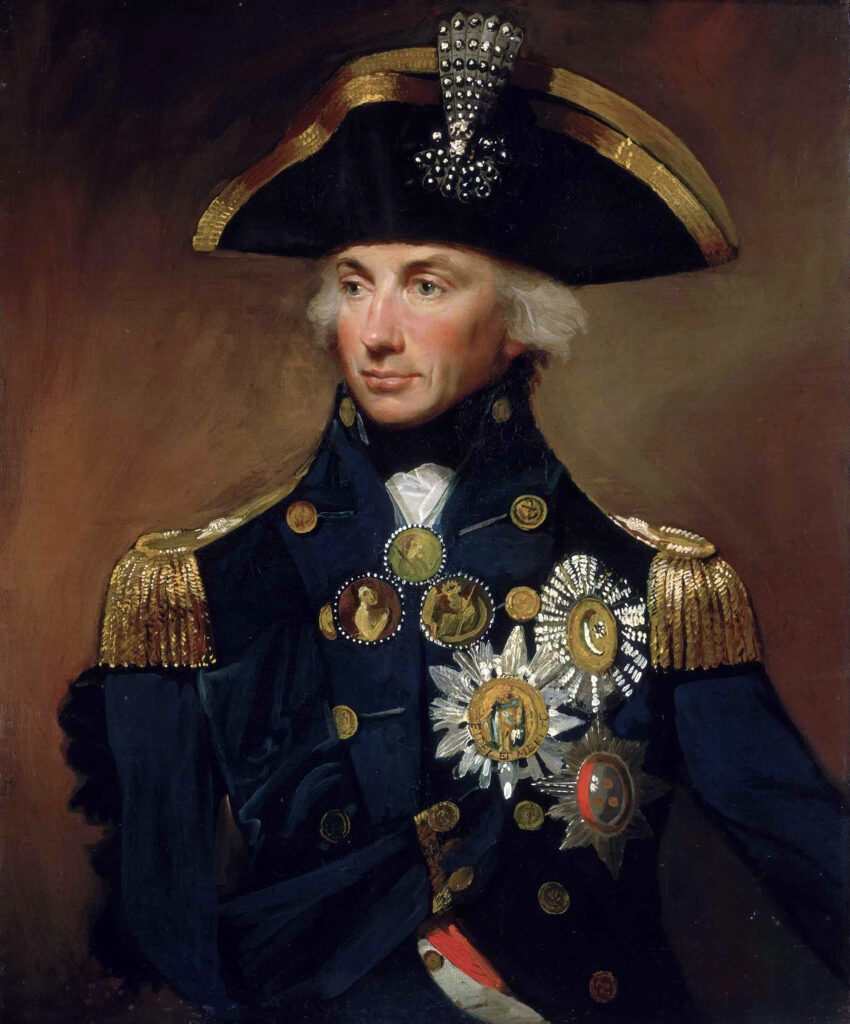October 21, 1805
One of the most pivotal moments in maritime history began on October 21, 1805. This day marked the commencement of the Battle of Trafalgar, a legendary encounter at sea that forever changed global naval warfare. Led by Admiral Lord Horatio Nelson, the British Royal Navy achieved a decisive victory over the combined fleets of Spain and France during the Napoleonic Wars, marking the day as monumental in maritime history.

The Battle
The Battle of Trafalgar commenced on the morning of October 21, 1805, off the Cape of Trafalgar, located on the southwestern coast of Spain. The Franco-Spanish fleet, composed of 33 ships of line, was commanded by Admiral Pierre-Charles Villeneuve. Facing Villeneuve was the 27-ship fleet of the British Navy under the command of Vice-Admiral Lord Nelson.
Breaking with the traditional style of naval warfare, Nelson introduced an innovative strategy for the battle. Nelson’s game-changing tactic was to divide his fleet into two columns and sail straight into the enemy line. In so doing, the British managed to break up the Franco-Spanish fleet, causing chaos and confusion that tilted the battle in favor of the Royal Navy.
By the time the battle ended, around 20 Franco-Spanish ships had been captured or destroyed, while the British fleet suffered no losses. However, this victory came at a high cost, as Lord Nelson was fatally wounded during the battle. He died just as the victory became assured, making him a legendary figure in British history.
Interesting Facts for Kids:
1. The ship that Nelson commanded during the battle was called HMS Victory. It is now a popular tourist attraction in Portsmouth, England.
2. Before the battle, Nelson sent a famous signal to his fleet, “England expects that every man will do his duty.” This message is still remembered today.
3. The Battle of Trafalgar Square in London is named after this event.
Educational Activities:
1. Create a model: Kids can construct a model of the HMS Victory or any other ship that participated in the Battle of Trafalgar. This activity will help them understand the architectural design of ships during that era.
2. Role-play the Battle: Children can divide into teams representing the British, French, and Spanish navies to re-enact the Battle of Trafalgar. This will help them understand the strategies involved in the historic confrontation.
Conclusion:
The Battle of Trafalgar is highly regarded as a defining event in naval history. It reshaped European power dynamics and marked the start of Britain’s century-long naval supremacy. The battle, however, leaves a bittersweet memory as the victorious British mourned their beloved leader, Lord Nelson, who gave his life to his country on the same day that guaranteed his place in the annals of history.
References:
1. Adkin, Mark. (2005). The Trafalgar Companion. London: Aurum Press.
2. Clayton, Tim, and Craig, Phil. (2004). Trafalgar: The Men, the Battle, the Storm. London: Hodder & Stoughton.
3. Schom, Alan. (1998). Trafalgar: Countdown to Battle, 1803–1805. New York: Athenum.







harold james
November 1, 2024 / at 11:35 pm
enjoyed them all, keep em coming.